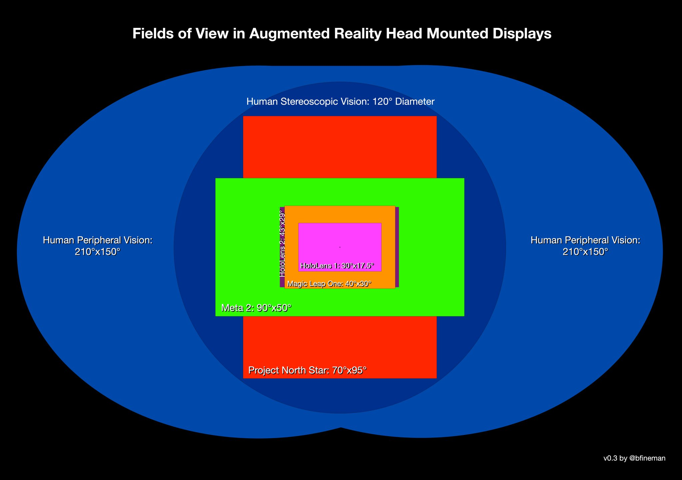
|
Today, adults in the U.S. spend over nine hours a day looking at screens. That counts for more than a third of our livelihoods. Yet even though they serve as a portal to 90 percent of our media consumption, screens continue to define and constrain how and where we consume content, and they may very soon become obsolete. Riding new advancements in hardware and connectivity, Augmented Reality (AR) is set to replace these 2D interfaces, instead allowing us to see through a digital information layer. And ultimately, AR headsets will immerse us in dynamic stories, learn-everywhere education, and even gamified work tasks. If you want to play AR Star Wars, you’re battling the Empire on your way to work, in your cubicle, cafeteria, bathroom and beyond. We got our first taste of AR’s real-world gamification in 2016, when Nintendo released Pokemon Go. Thus began the greatest cartoon character turkey shoot in history. With 5 million daily users, 65 million monthly users, and over $2 billion in revenue, the virtual-overlaid experience remains one for the books. In the years since, similar Augmented Reality apps have exploded. Once thick and bulky, AR glasses are becoming increasingly lightweight, stylish, and unobtrusive. And over the next 15 years, AR portals will become almost unnoticeable, as hardware rapidly dematerializes. Companies like Mojo Vision are even rumored to be developing AR contact lenses, slated to offer us heads-up display capabilities — no glasses required. In this second installation of our five-part AR blog series, we are doing a deep dive into the various apps, headsets, and lenses on the market today, along with projected growth. Let’s take a look… P.S. Send any tips to our team by clicking here, and send your friends and family to this link to subscribe to Abundance Insider. Mobile Augmented RealityWe have already begun to sample AR’s extraordinary functions through mobile (smartphone) apps. And the growth of the market is only accelerating. Snap recently announced it will raise $1 billion in short-term debt to invest in media content, acquisitions, and AR features. Both Apple and Google are racing to deploy phones with requisite infrastructure to support hyper-realistic Augmented Reality. And in the iOS space, developers use ARKit in iPhone software, from the SE to the latest-generation X, to bring high-definition Augmented Reality experiences to life. Apple CEO Tim Cook has repeatedly emphasized his belief that AR will “change the way we use technology forever.” While recent rumors reveal the company’s AR glasses project has been discontinued, Apple’s foray in AR is far from over. Just recently, the tech giant broadcasted a large collection of job postings for Augmented Reality and Virtual Reality experts. And although somewhat speculative, Apple is likely waiting for the consumer market to mature before releasing its first-generation AR glasses or pivoting towards an entirely new AR hardware product. For now, Apple seems to be promoting the extensive hardware advancements showcased by its A12 bionic chip, not to mention the variety of apps available in its App Store.
Yet for Android users, options are just as varied, based on the Android software-compatible ARCore used by developers. While the recently announced Google Glass Enterprise Edition 2 aims to capture enterprise clients, Android smartphone hardware provides remarkable AR experiences for everyday consumers.
Leading HeadsetsAlthough the number of AR headsets breaking into the market may seem overwhelming, a few of the top contenders are now pushing the envelope in everything from wide FOV immersion to applications in enterprise. (1) Highest ResolutionDreamGlass: Connected to a PC or Android-based smartphone, DreamWorld’s headset offers 2.5K resolution in each lens, beating out Full HD resolution screens, but in AR. Now flooded by investment, resolution improvements minimize pixel size, reducing the “screen door effect,” whereby pixel boundaries disrupt the image like a screen’s mesh. Offering unprecedented levels of hand- and head-tracking precision, the headset even features 6 degrees of freedom (i.e. axes of directional rotation). And with a flexible software development kit (SDK), supported by Unity and Android, the device is highly accessible to developers, making it a ready candidate for countless immersive experiences. Already at $619, the DreamGlass and comparable technology are only falling in price. (2) Best for EnterpriseGoogle Glass Enterprise Edition 2: In just four years (since Google’s release of the last iteration), the Google Glass has gotten a major upgrade, now geared with an 8-megapixel camera, detachable lens, vastly increased battery life, faster connection, and ultra-high-performance Snapdragon XR1 CPU. Already, the Glass has been sold to over 100 businesses, including GE, agricultural machinery manufacturer AGCO, and health record company Dignity Health. But perhaps most remarkable are the bucks AR can make for business. Using the Glass, GE has increased productivity by 25 percent, and DHL improved its supply chain efficiency by 15 percent. While only (currently) available for businesses, the new-and-improved AR glasses stand at $999 and will continue to ride plummeting production costs. (3) Democratized Augmented RealityVuzix Blade: Resembling chunky Oakley sunglasses, these smart glasses are extraordinarily portable, with a built-in Android OS as well as both WiFi and Bluetooth connection. Designed for everyday consumer use (at a price point of $700), the Vuzix Blade is slowly chipping away at smartphone functionalities. For easy control of an intuitive interface, a touchpad on the device’s temples allows consumers to display everything from social media platforms and user messages to “light AR” experiences. Meanwhile, an 8MP HD camera makes your phone camera null and void, allowing users to remain immersed in their experience while digitally capturing it at the same time. All the while, built-in Alexa capabilities and vibration alerts extend users’ experience beyond pure visual stimulation. (4) Widest Field of View (FOV)Microsoft HoloLens 2: This newly announced headset leads the industry with a 43° x 29° FOV, more than double its (2016-released) predecessor’s capability. But this drastic increase in visual immersiveness is far from the only device improvement. For improved long-use comfort, the headset’s center of gravity now rests on the top of the head, moving away from typical front-loaded headsets. An even more novel functionality, tiny cameras on the nose bridge verify a user’s identity by scanning the wearer’s eyes and customizing the display based on distance between pupils. Once accompanied by emotion-deducing AIs (now under development), this tracking technology could even evolve to intuitively predict a user’s desires and emotional feedback in future models. Geared with a Qualcomm 850 mobile processor and Microsoft's own AI engine built-in, Hololens’ potential is limitless.
(5) Class A ComfortMagic Leap One: Weighing less than 0.8 pounds, this headset provides one of the most lightweight experiences available today with a 40° x 30° FOV, just barely eclipsed by that of Microsoft’s HoloLens 2. En route to dematerialization, Magic Leap merely requires a small “Lightpack” attachment in the wearer’s pocket, connected via cable to the goggles. A handheld controller additionally contains a touchpad, haptic feedback, and six degrees of freedom motion sensing. Meanwhile, light sensors make the digital renderings even more realistic, as they reflect physical light into the viewer’s space. Teasing AR’s future convergence with Artificial Intelligence, Magic Leap even features a virtual human called “Mica,” which responds to a user’s emotions (detected through eye-tracking) by returning a smile or offering a friendly gesture. Final ThoughtsAs headsets plummet in price and size, AR technology will rapidly permeate households over the next decade. Once we have mastered headsets and smart glasses, AR-enabled contact lenses will make our virtually enhanced world second nature. And ultimately, BCIs will directly interface with our neural signals to provide an instantaneous, seamlessly intuitive connection, merging our minds with limitless troves of knowledge, rich human connection, and never-before-possible experiences. While only approaching the knee of the curve, these pioneering mobile apps and novel headset technologies explored above will soon give rise to one of the most revolutionary industries yet to be seen— one that will fundamentally transform our lives. Join Me(1) A360 Executive Mastermind: Want even more context about how converging exponential technologies will transform your business and industry? Consider joining Abundance 360, my highly selective community of 360 exponentially minded CEOs, who are on a 25-year journey with me — or as I call it, a “countdown to the Singularity." If you’d like to learn more and consider joining our 2020 membership, apply here. Share this with your friends, especially if they are interested in any of the areas outlined above. (2) Abundance-Digital Online Community: I’ve also created a Digital/Online community of bold, abundance-minded entrepreneurs called Abundance-Digital. Abundance-Digital is my ‘onramp’ for exponential entrepreneurs — those who want to get involved and play at a higher level. Click here to learn more. Know someone who would benefit from getting Abundance Insider? Send them to this link to sign up. |
Topics: AR/VR Exponentials Augmented Reality intelligent hardware hardware augmented manufacturing Mojo Vision Microsoft HoloLens Magic Leap








